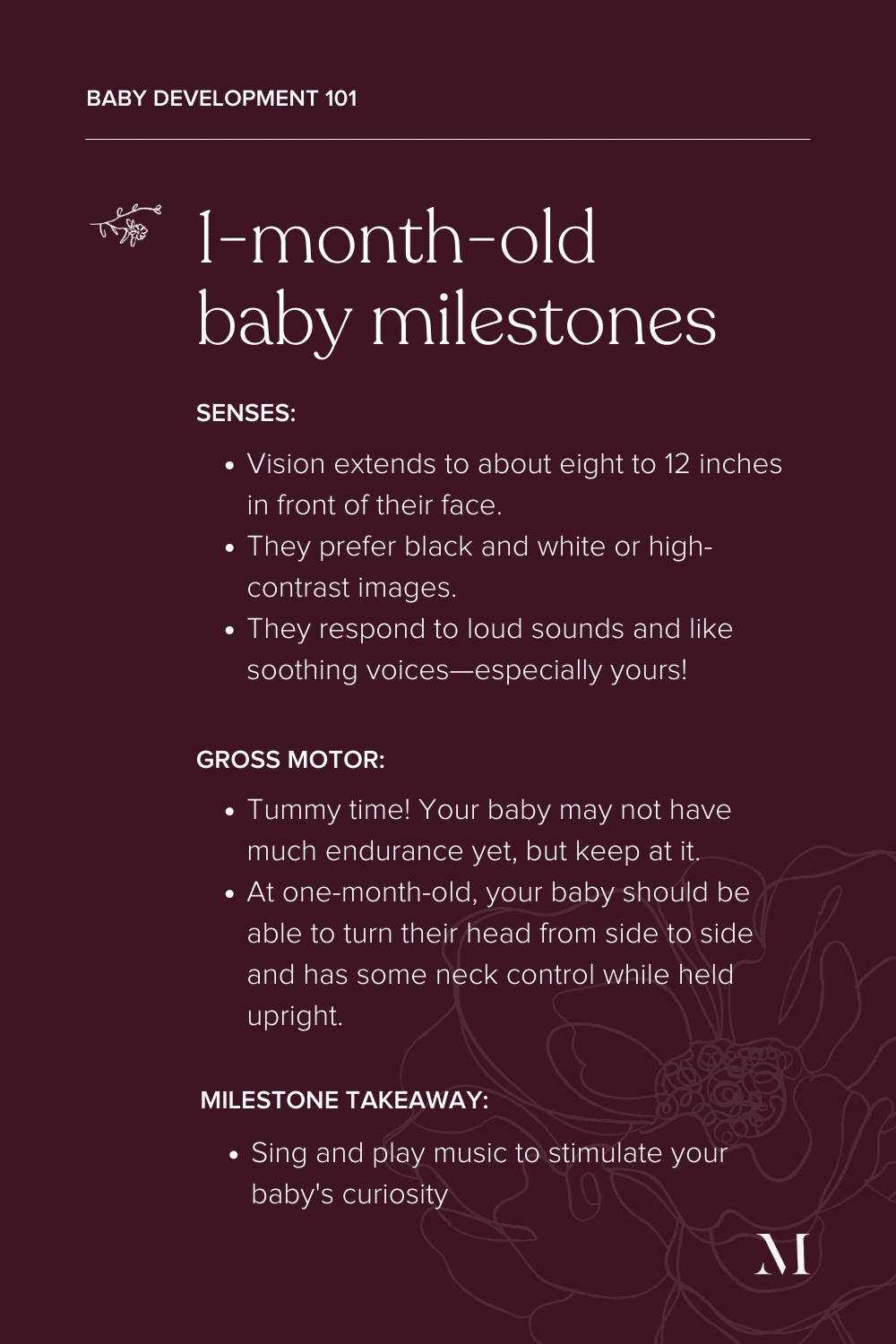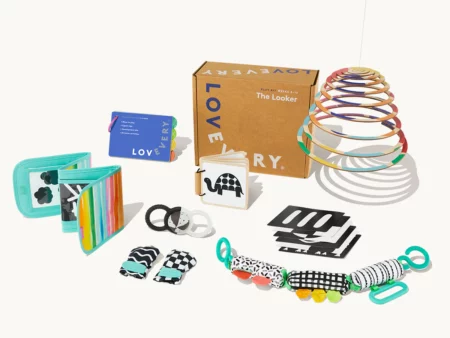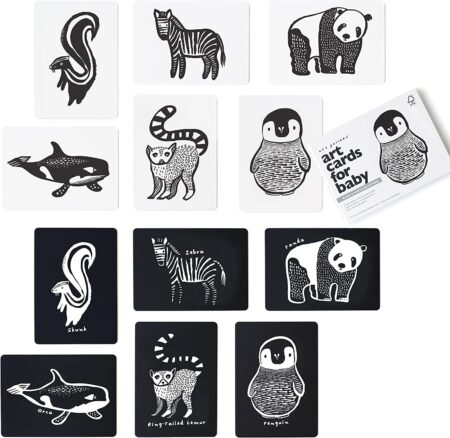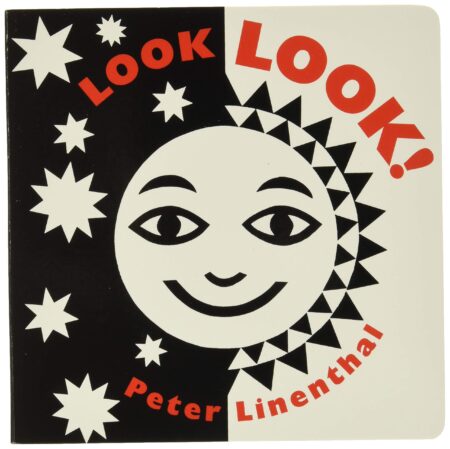1-month-old baby milestones
At 1 month old, your baby is still getting the hang of life "on the outside." Still in the thick of the fourth trimester, they are comforted by touch and the sound of your voice.

We independently select and share the products we love—and may receive a commission if you choose to buy.
Mama, your 1-month-old is perfect! But wondering, and sometimes worrying, about your baby’s developmental milestones is also perfectly common. After all, you’ve only “known” your little one for a few weeks now!
Remember, every child is different—and that’s a big part of the magic of parenting. Still, it is helpful to have a baseline understanding of 1-month milestones. Then you can track developmental progress and consult with your pediatrician if you have any questions or concerns about your baby’s development.
While your baby may be the one working hard checking baby developmental milestones off the list, you’ve got a big role as their first teacher, coach and cheerleader. Along with a team of experts, we’ve got you.
1-month milestones at a glance
At 1 month old, your baby is still getting the hang of life “on the outside.” Still in the thick of the fourth trimester, they are comforted by touch and the sound of your voice. In other words, keep the snuggles coming!
It might seem like all your little one does at the moment is eat, sleep, cry and poop, but big changes are coming. By the end of month one, they’ll be more engaged with the world around them, making smoother body movements, and having slightly longer alert periods.
An in-depth look at 1-month milestones
From changes in their sensory development to new and improved gross motor skills, here’s what you may expect to happen in the first month.
1-month developmental milestones
Here’s what The American Academy of Pediatrics (AAP) says about 1-month-old baby milestones.
(Editor’s note: The 1-month milestone guidelines were written to reflect the behaviors that 50% or more of children exhibit at a certain age. Note that milestones are not a perfect metric: It’s key to speak to your pediatrician if you have concerns about your unique child.)
Senses
- Your 1-month-old’s visual focus extends to about eight to 12 inches in front of their face—an improvement since birth! They prefer black and white or high-contrast images, but definitely prefer human faces the most. Don’t worry if their eyes still cross.
- Your little one has been eavesdropping on conversations since they were in the womb. With fully developed hearing, they continue to like soothing voices—especially yours! They should respond to loud sounds.
Gross motor skills
- Your baby may not have much endurance during tummy time sessions yet, but keep at it! If they really are not into it, try laying them belly-down across your lap for modified tummy time.
- At 1-month-old, your baby should be able to turn their head from side to side and has some neck control while held upright.

Baby’s sleep at 1 month
You’ve likely noticed that newborns sleep a lot. That’s all normal, mama: The American Academy of Sleep Medicine states that a newborn should get 12-16 hours of sleep per 24 hours. But even in just a short amount of time, so much has changed since that first week. Your little one may still not know the difference between day and night, and it’s unlikely that they’re sleeping for long stretches at night just yet.
Also note that their sleep at this stage shouldn’t follow a true schedule. Keep focusing on their sleepy cues, which will help prevent them from getting overtired. And if you’re holding them for naps (aka contact napping)? That’s definitely OK. (All the snuggles!)
Remember that SIDS risk is still high until babies reach 6 months of age, so always ensure babies are placed down for sleep on their backs, on a flat surface and with nothing else in their crib or bassinet for every nap and night.
Related: 14 science-backed ways to reduce SIDS risk in babies
What baby sleep looks like at 1 month:
- Your baby may be taking 4 to 5 naps per day
- Your baby may be sleeping in 2- to 4-hour windows at night
- Your baby may be awake for 30 minutes to 45 minutes at a time
Read more: How much sleep does a 4-week-old baby need?
Feeding a 1-month-old
Feeding might be getting a little easier now that you’re rounding out the first month, but if it’s still a struggle, reach out to your pediatrician for help.
The AAP and La Leche League (LLL) recommend the following feeding timeline and amounts for 4-week-olds:
- Breast milk: 2 to 3 ounces every 2 to 3 hours
- Formula: 2 to 3 ounces every 3 to 4 hours
Because formula takes longer to digest than breast milk, when using formula, your baby’s feeding windows may be a bit more spread out—good to know especially if you’re combination feeding.
Still, the AAP recommends that parents and caregivers should follow the responsive feeding method, also known as feeding on demand, which looks to the infant’s hunger cues for when to feed. Keep an eye out for when your little one is turning their head from side to side (like they’re looking for you), bringing their fist to their mouth, starting to cry or rooting. Even though they can’t speak yet, they can still tell us a lot—and responding to their cues and cries is good for boosting attachment.
Read more: Four-week-old baby feeding schedule & amounts
Activities for a 1-month-old
Remember that while it’s never too early to start learning (your baby’s brain is a sponge, soaking up stimuli), play and activities at this age are less organized and structured than they may be down the line. All your baby wants and needs is bonding time with you and their other caregivers, so be sure to include plenty of cuddling into your day.
Here are a few other low-key activities for a 1-month-old baby to try:
Baby massage: With big benefits for both you and baby, settling into an infant massage routine (after bath might work well) can help promote bonding and parenting confidence.
Reading aloud: It doesn’t matter if it’s The New York Times or “Guess How Much I Love You”—baby just wants to hear your voice.
High-contrast board books and toys: Baby sees best in black and white right now, so pointing out images in a black-and-white board book or helping them grasp a bold toy can be engaging.
Tummy time: Just 3 to 5 minutes of tummy time in a session can pay off in big dividends when it comes to strengthening their trunk, neck and head control. You can start by laying baby tummy-down on a mat on the floor, in their crib or bassinet (while supervised!) or across your knees when you’re sitting down. Make it fun by incorporating singing and music—and give extra snuggles after.
Related: Activities for a 1-month-old: Fostering baby’s development
Our favorite products for 1-month-olds
Related: 13 newborn photo outfits for your baby’s first portraits
Supporting your 1-month-old baby’s development
Ready to make the most of those wake windows? These 1-month-old baby activities can support your cutie’s development.
- Soothe your one-month-old baby by talking and singing to them. They don’t mind if you ramble or sing off-key. They just love the sound of your voice.
- Play with your one-month-old baby by getting down on the ground with them during tummy time and “putting on a show” with toys held about one foot in front of them.
- Engage your one-month-old baby’s senses by helping them feel different textures on toys.
Related: Your 10 most baby safety questions, answered by a pediatrician
It’s science: Babies benefit from touch
Right now, play time might look quite tame (or even sleepy) with your baby. However, your little one is learning constantly—and few things do more good for them than a loving cuddle or hug. As researchers have shown, newborns experience numerous health, cognitive and developmental benefits from touch. Skin-to-skin contact is still highly beneficial throughout the first month and beyond.
A note from Motherly: 1 month milestones
You’re probably still getting the hang of a daily routine with your newest addition in the house. So take it from us and don’t put too much pressure on yourself (or your baby) when it comes to working on their milestones. Try for some regular tummy time, talk with them plenty and lavish them with cuddles—and we promise you’ll be on the right track.
Look ahead: 2-month-old baby milestones
A version of this story was originally published on Oct. 16, 2021. It has been updated.


